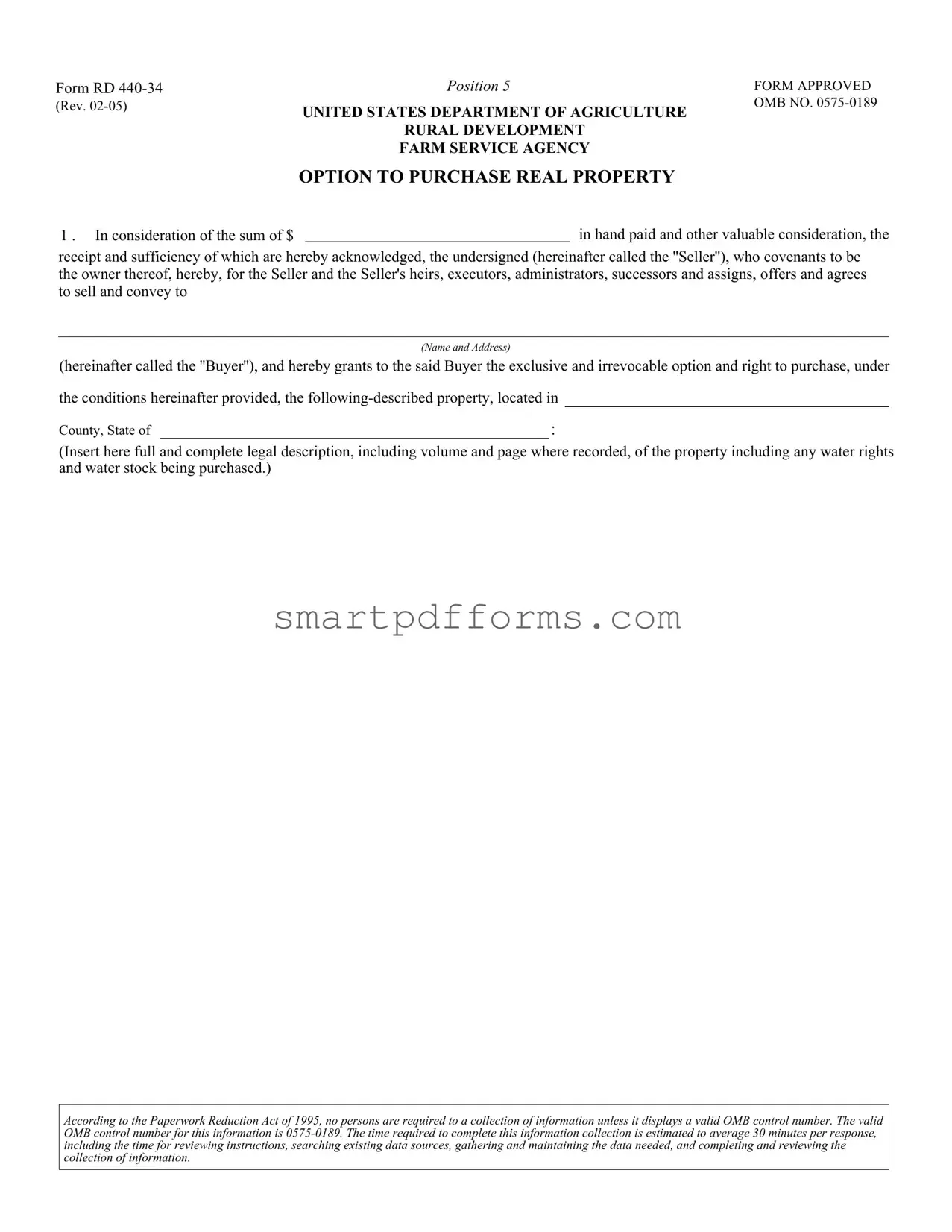Understanding the Form RD 440-34, or the Option to Purchase Real Property, involves navigating through a maze of legal concepts and terms. However, several misconceptions frequently surface, which can mislead both sellers and buyers. Clarifying these misconceptions ensures that all parties fully comprehend their rights and obligations under this form.
Misconception 1: The form is only applicable for large, commercial agricultural operations.
This is incorrect. While the form is indeed used within the context of rural development, it serves a wide range of properties, not limited to large agricultural entities. Small farms, single-family homes, and other types of property within rural areas also use this form for transactions.
Misconception 2: The buyer must secure financing from the government.
The form does mention enabling the buyer to obtain a loan through various government services; however, it doesn't strictly require government financing. The buyer may secure funds from any source, though government loan efforts often form part of the option's consideration.
Misconception 3: Sellers are responsible for all property taxes until the transfer is complete.
Taxes and assessments are prorated as of the closing date of the transaction. It means that the seller and buyer share responsibilities based on the portion of the year they held or will hold the property.
Misconception 4: Title clearance expenses must always be borne by the seller.
While the form states that the seller agrees to pay expenses for title clearance, this can be modified if agreed upon differently by both parties. Agreements to shift some or all of these costs to the buyer can be inserted into the form.
Misconception 5: The form gives the buyer immediate proprietary rights.
The RD 440-34 form grants an exclusive option to purchase, not immediate ownership or rights beyond the option to purchase under specified conditions. The transfer of property rights occurs only after the option is exercised and the transaction finalized.
Misconception 6: The form is solely a government document with no room for customization.
While it's a standard form approved by the USDA, parties can insert conditions unique to their transaction. This makes the document versatile and customizable to individual needs.
Misconception 7: This option to purchase binds the seller indefinitely.
The form clearly stipulates the time frame within which the option can be exercised, offering a balance between buyer’s privilege to purchase and the seller’s need for transactional closure.
Misconception 8: Acceptance of the option must be in writing.
While written notice is standard and provides clear evidence, the form also allows for acceptance via telegraph or in person, highlighting various means to officially communicate the decision.
Misconception 9: The form guarantees the property’s condition.
Despite requiring the seller to disclose and address termite infestation and the functionality of waste disposal and water systems, the form itself does not guarantee the overall condition of the property. Due diligence on part of the buyer is necessary.
Misconception 10: Once signed, the option cannot be terminated early by the seller.
On the contrary, the seller can terminate the offer after the irrevocable period noted, given that proper written notice is delivered to the buyer. This allows sellers to reclaim their property under certain conditions, ensuring they're not indefinitely bound to the agreement.
In conclusion, the Form RD 440-34 serves as a critical document in the purchase of rural properties, underpinning transactions with both flexibility and legal structure. Understanding its actual implications helps both buyers and sellers navigate their obligations and rights more effectively.




